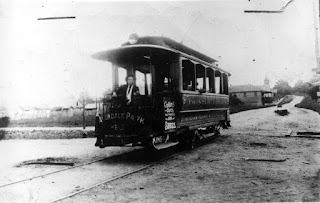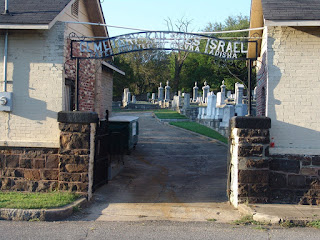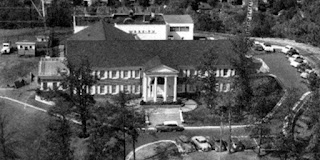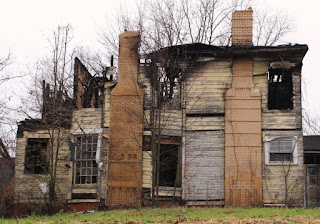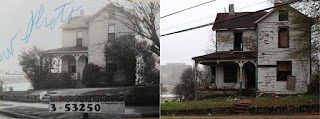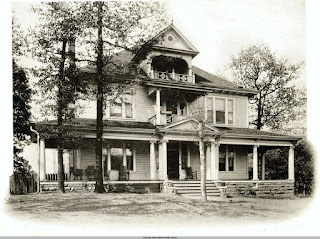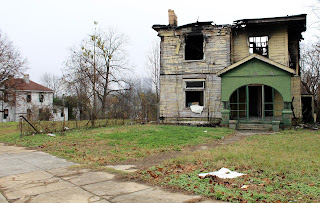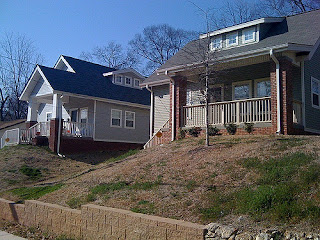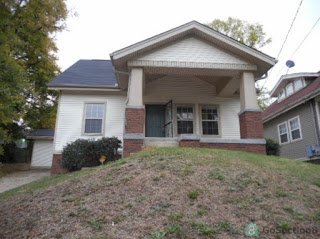The Beginning of Fountain Heights
The abandoned homes in Fountain Heights are some of the oldest in Birmingham. The University of Alabama at Birmingham (UAB) Assistant Professor Pamela King has surveyed its historic buildings. She says the neighborhood “has some histories that are absolutely unique in the city, so when it’s gone, it’s gone.”
According to King, it began in the 1880s as a Jewish community. Jews eventually migrated out, and by the 1940s, it was a working-class white neighborhood. Middle-class blacks began to move into the area, crossing over from Smithfield.
“I think of it as the frontline of Birmingham’s desegregation,” says King. “And there’s a huge wave of African-Americans who move in right that year. I interviewed some and … by 1969, 1970, according to Birmingham Census and Records, it’s 100 percent Black.” Around this time, construction began for Interstate 65. It cut directly through Fountain Heights and the neighboring community of Enon Ridge.
By the 1970s, Fountain Heights was surrounded by interstate on three sides and property values declined. Middle- and upper-income black families began to leave the area. John Colón, Birmingham’s community development director, says these outward migration patterns occurred throughout inner-city Birmingham. “We’ve lost a third of our population essentially over the past 50, 60 years,” he says. “And as folks left the city, they left sort of a surplus of housing.”
Early 1900’s Street Car that ran between Fountain Heights and Avondale
Henry F. DeBardeleben lived in Fountain Heights
A Jewish Settlement was established in Fountain Heights
Fox 6 WBRC actually began in Fountain Heights
One of Birmingham’s historic fire stations, No. 11, was built in 1910 in a commercial style, in contrast to later suburban stations. The garage door sat on the left side of the building next to a central entrance door. A brick belt over the office portion of the building and an awning over the doors are the only decorative elements in the building.
There are many more stories connected to the Fountain Heights Community and it is sad to see its deterioration. I know progress is important, and we must have improvements on our Interstate system, but Birmingham has lost so much of its history that makes it a unique city. The destruction and loss of the Birmingham Terminal Station is and will forever be a disappointment felt by many.
Terminal Station in 1910
Jemison magazine of June 1910 volume 1, No. 2 stated that the “Terminal Station cost $2,000,000 and had a wonderful effect on property values on Second, Third, Fourth, Fifth and Sixth Avenues, East of Twentieth Street.” Can you imagine what it would cost to replace such a property today? Unfortunately, the Terminal Station has long been demolished in the name of “modernization”. Imagine how wonderful it would be if we still had the terminal in conjunction with Railroad Park.
Old Homes Abandoned and New Homes Built
Photo on the left courtesy of the Birmingham Department of Archives. Photo on the right courtesy of Mary Scott Hodgin, Health & Science Report for WBHM
H. Clanton Miller house located at 1110 Fountain Ave. cica 1910
Not all of the houses in the Fountain Heights neighborhood is abandoned and/or neglected. There are many well-maintained homes in the area, as well as, new builds.
Over the last several years, there has been a renewed interest in the Fountain Heights neighborhood with many new builds that mimic the bungalows and Four Squares that were original to that area.
Photo above taken from the following article: https://birminghamview.com/online/2008/01/22/new-fountain-heights-homes-signal-revitalization/
As is true of any long neglected and overlooked neighborhood, Fountain Heights will rebound into a thriving community only with the help of progressive investors. With its close proximity to downtown and all the amenities and businesses that the downtown has to offer coupled with the easy access to interstates and major highways, the Fountain Heights neighborhood has a lot to offer.

